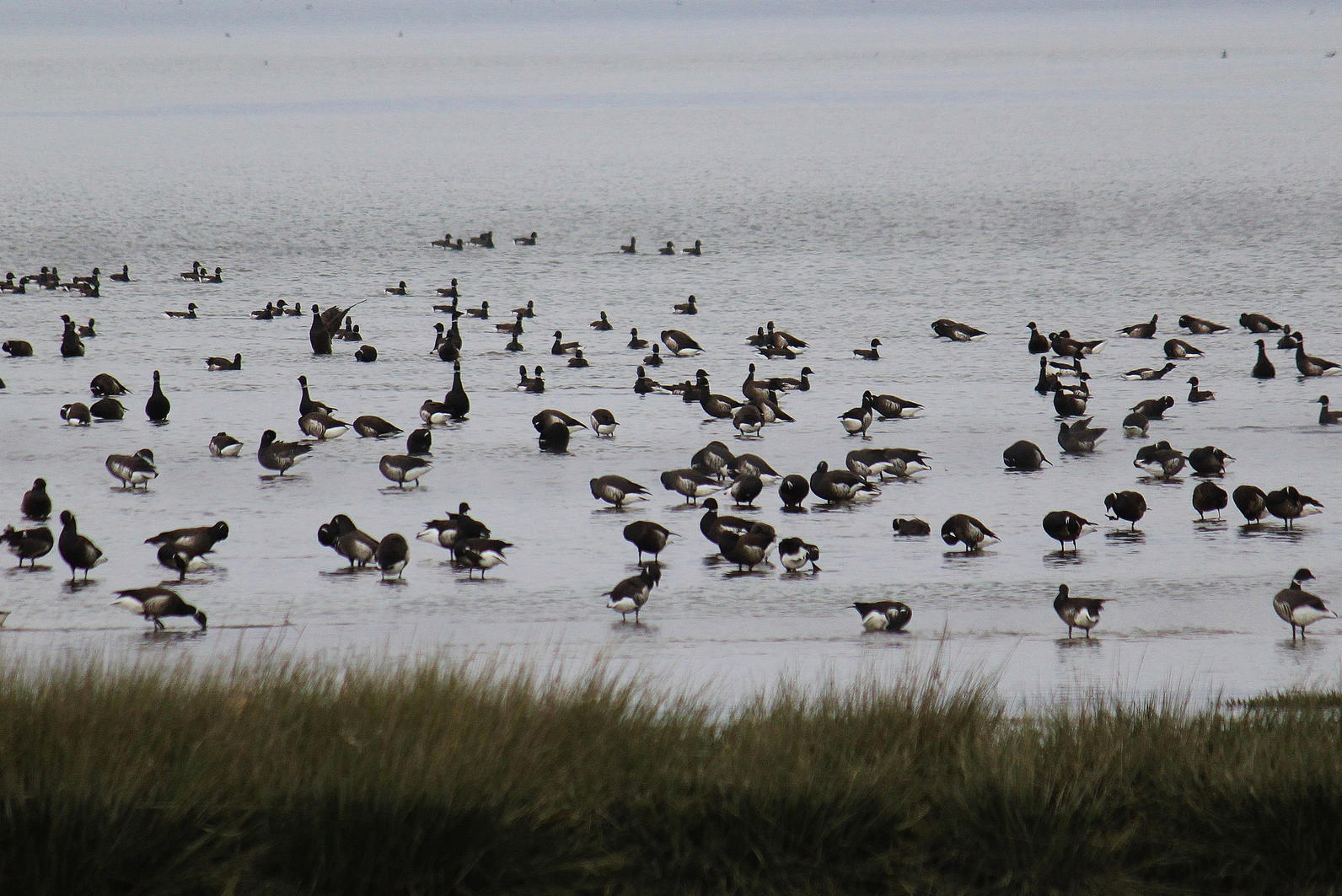
Humboldt Bay, CA – In an effort to protect one of the most important places for migratory birds on the Pacific Coast, conservation and hunting groups today filed suit to stop a large expansion of oyster farming in Humboldt Bay that will dramatically increase the footprint of existing oyster operations. This unprecedented expansion in Humboldt Bay – which would increase the state’s aquaculture acreage by 34 percent – would cause irreparable damage to eelgrass beds and mudflats that migratory birds such as Brant and Western Sandpiper need to survive.
The lawsuit against the Humboldt Bay Harbor District, filed today in the California Superior Court in Humboldt County by Earthjustice on behalf of Audubon California and California Waterfowl Association, targets the faulty environmental impact studies that formed the basis for the district’s February approval of the expansion of Coast Seafood’s current operations in the bay.
“Humboldt Bay constitutes a delicate balance of habitat, recreational opportunities and economic activity – and this project will turn all of that upside down,” said Brigid McCormack, executive director of Audubon California. “There are other parts of the bay that won’t cause this level of conflict, which makes it all the more disappointing that the Harbor District and Coast Seafoods are unwilling to do the right thing with their project.”
Humboldt Bay is a vital stop for birds along the Pacific Flyway. In spring migration alone, Humboldt Bay hosts as many as 100,000 shorebirds each day. It hosts extraordinarily large percentages of many populations of shorebirds and waterfowl, including approximately:
- Up to 60% of all migrating Black Brant
- 23% of all migrating and overwintering Western Sandpiper
- 44% of all migrating and overwintering Dunlin (Pacifica subspecies)
“If allowed to continue, this expansion will reduce critical habitat and food resources for Brant and other waterfowl species that support the cherished tradition of waterfowl hunting in Humboldt Bay,” said Mark Hennelly of the California Waterfowl Association.
A key driver of this bird activity is Humboldt Bay’s eelgrass, a rare type of habitat that is invaluable as a food resource for birds, as well as the fish and crustaceans that birds eat. Eelgrass is on the decline in much of California, and about half of the state’s remaining eelgrass is in Humboldt Bay. Eelgrass is also vital to the bay’s herring population, which will lose spawning ground to this project.
In addition to degrading hundreds of acres of eelgrass habitat, the project would increase the footprint of aquaculture in the northern portion of Humboldt Bay by 61 percent, effectively blocking that area from use by wildlife, fish and people. For example, herring avoid spawning on aquaculture gear, Brant and other birds avoid foraging in and near the gear, and hunters, paddlers, and other recreational users cannot safely navigate in or around it.
Coastal mudflats support the highest densities of shorebirds in California. Many of these shorebirds that use these habitats – such as Long-billed Curlew, Western Sandpiper and Dunlin – are in decline. This type of oyster farming can exclude many shorebirds from feeding and resting during the critical migratory and wintering stages.
The lawsuit filed today takes specific aim at the environmental impact report approved by the Harbor District Commission in February. This report failed to analyze and disclose the significant, harmful impacts of the project on the eelgrass and other habitat in the bay, and the cumulative effects on numerous migratory species that depend on that habitat along the entire West Coast and out into the Pacific Ocean. It also failed to properly account for the increased disturbance that the proposed expansion would have on sensitive bird and fish species, as well as the effects on herring spawning in the bay.
“In its environmental review and approval of the Coast Seafoods expansion, the Humboldt Bay Harbor District ignored solid scientific data and extensive comments from biologists on the severe impacts this proposal would have on Humboldt Bay’s eelgrass beds and the birds, fish, and other wildlife whose survival depends upon them,” said Trent Orr, staff attorney at Earthjustice.
About Audubon California
Audubon California is building a better future for California by bringing people together to appreciate, enjoy and protect our spectacular outdoor treasures. With more than 50,000 members in California and an affiliated 48 local Audubon chapters, Audubon California is a field program of the National Audubon Society. More information is available at www.ca.audubon.org.
About California Waterfowl Association
California Waterfowl Association is a 20,000-member nonprofit organization dedicated to the conservation of California’s waterfowl, wetlands and hunting heritage. For more information, please visit www.calwaterfowl.org.
About Earthjustice
Earthjustice, the nation’s premier nonprofit environmental law organization, wields the power of law and the strength of partnership to protect people’s health, to preserve magnificent places and wildlife, to advance clean energy, and to combat climate change. Because the earth needs a good lawyer.
####



